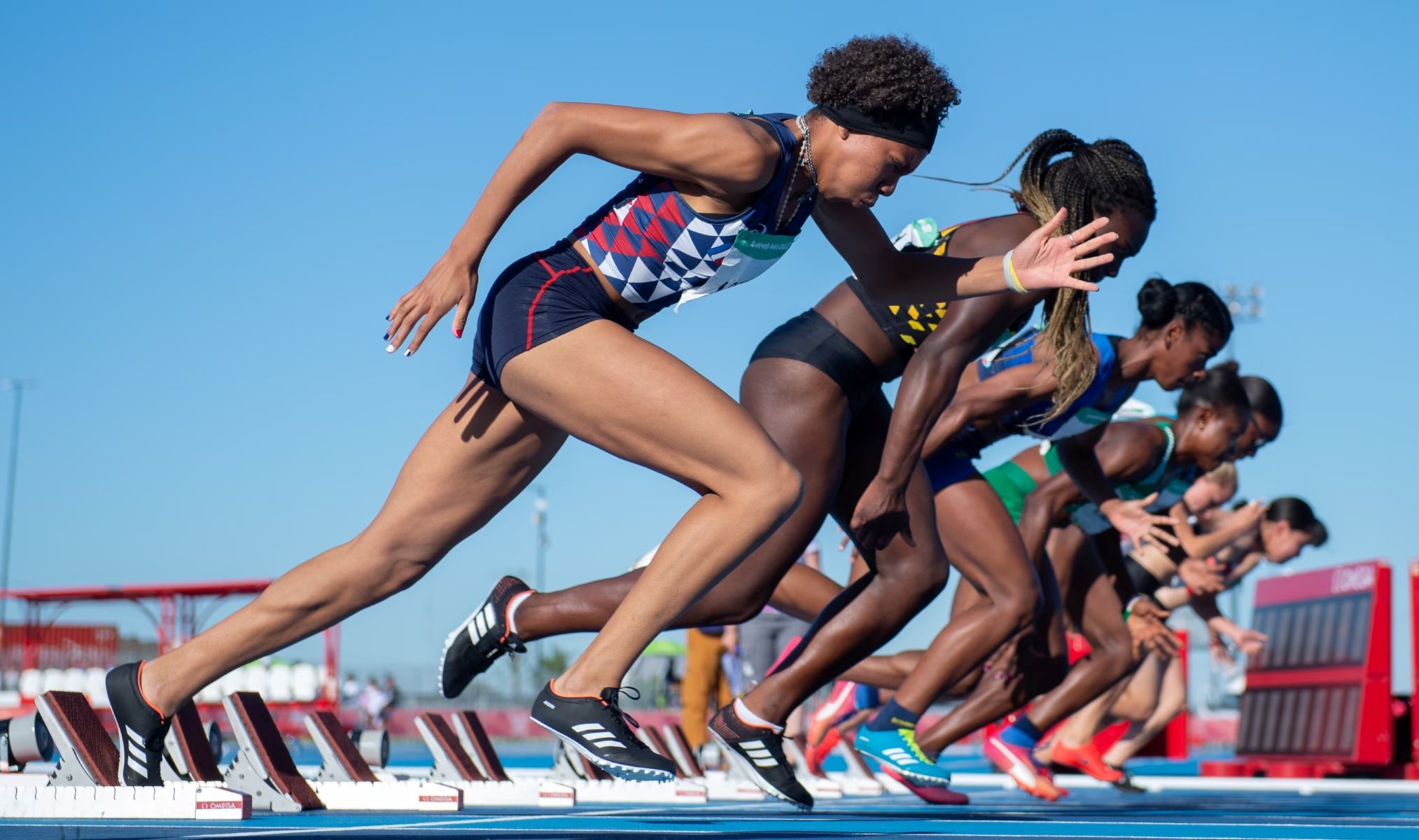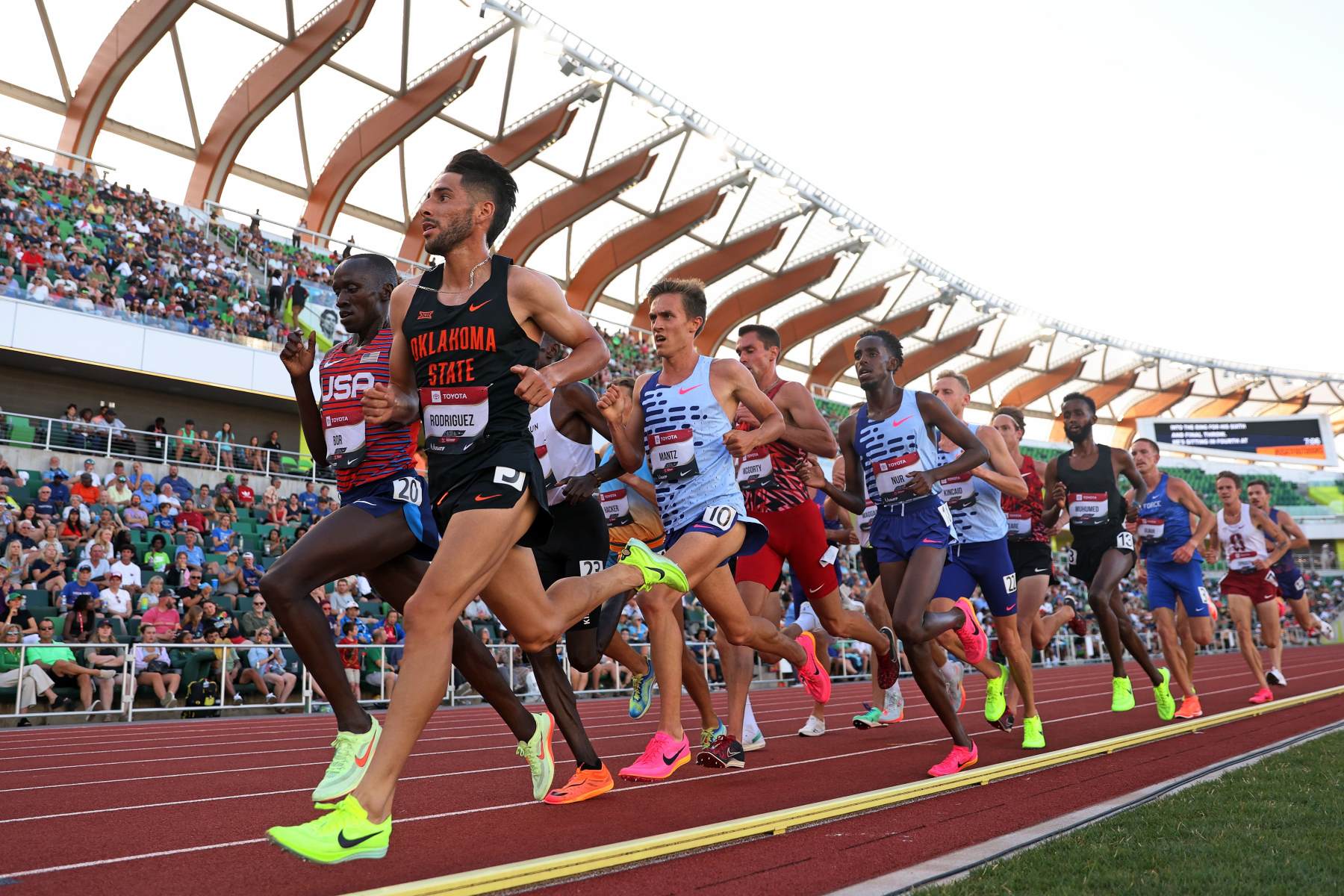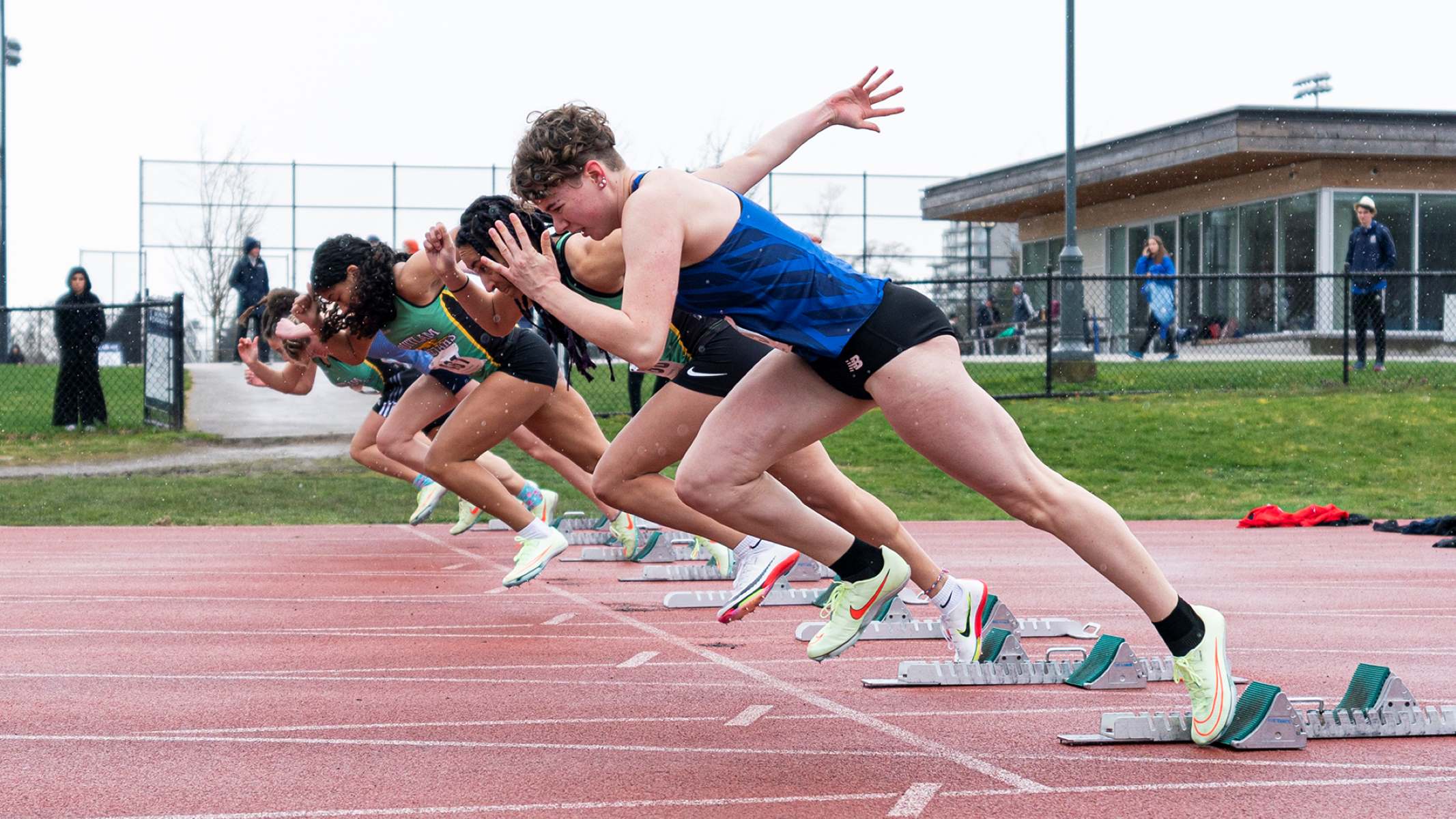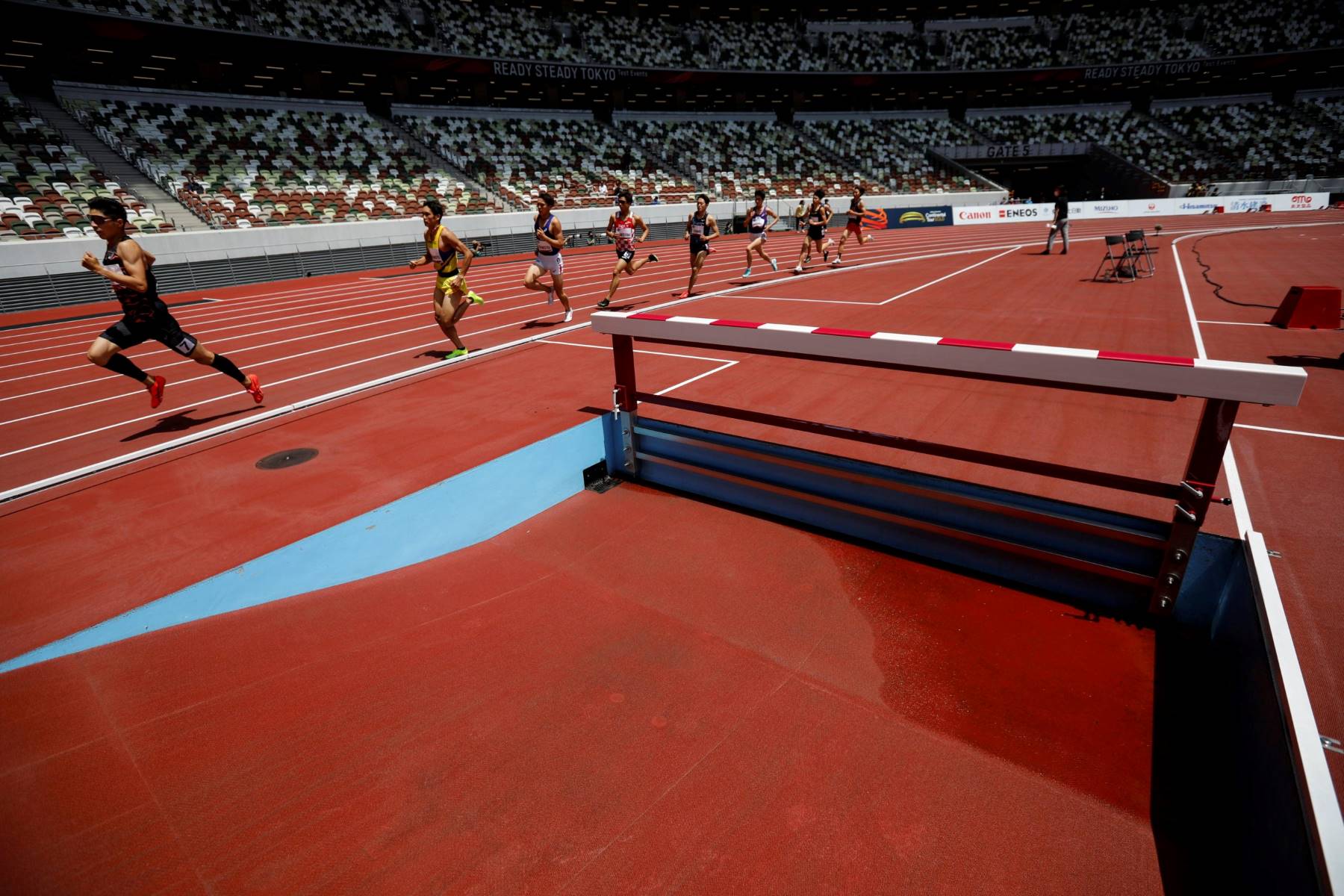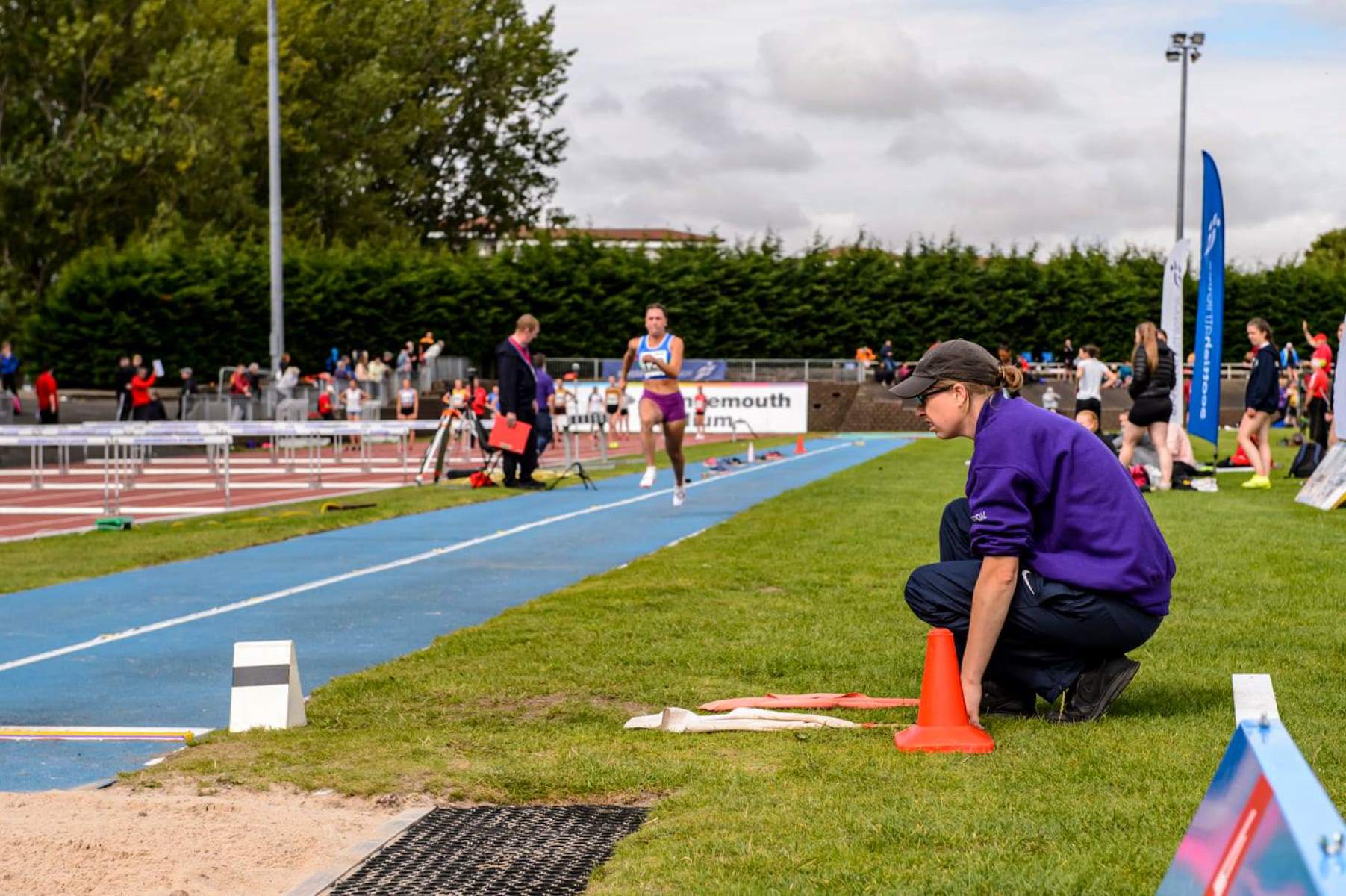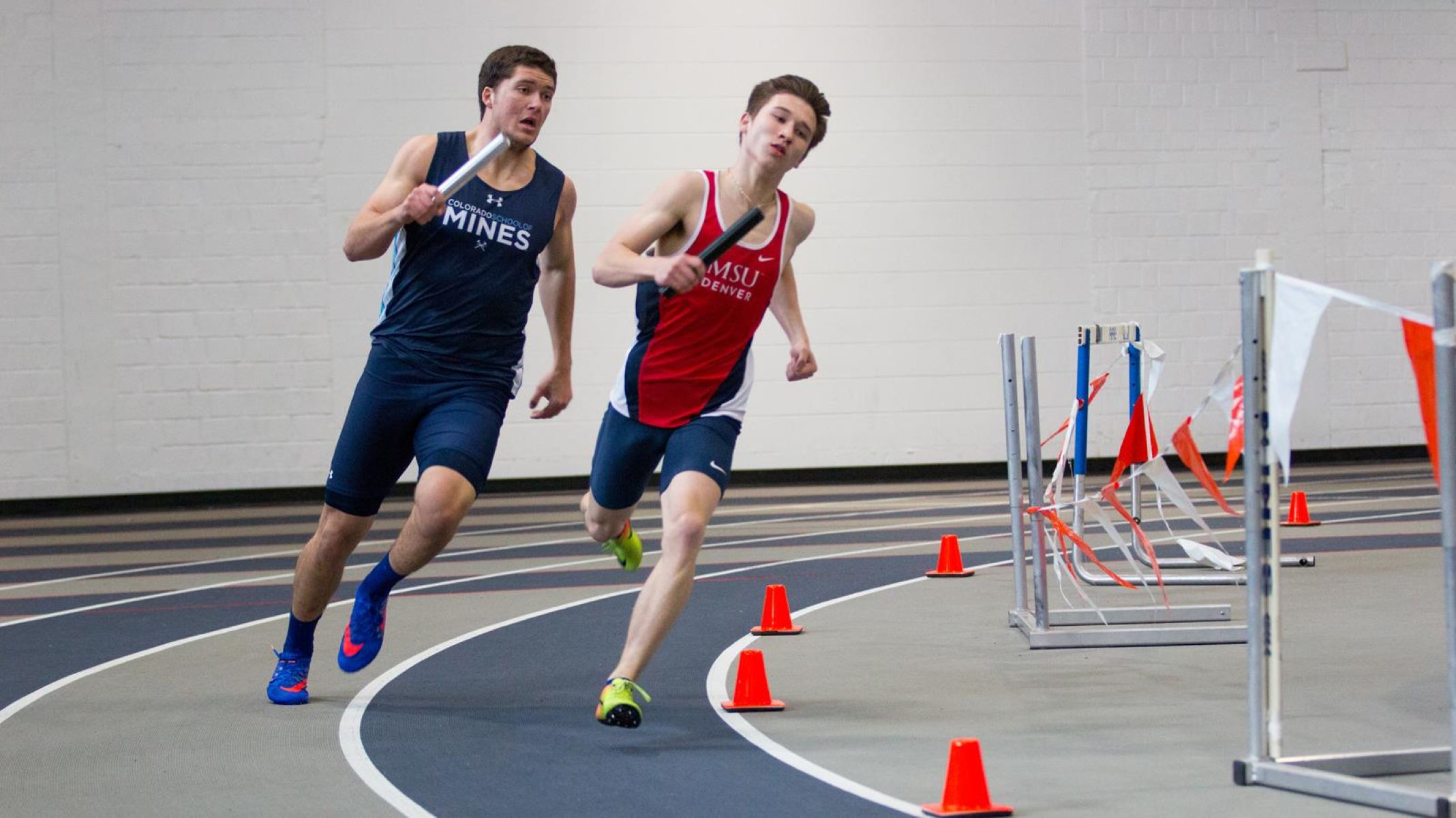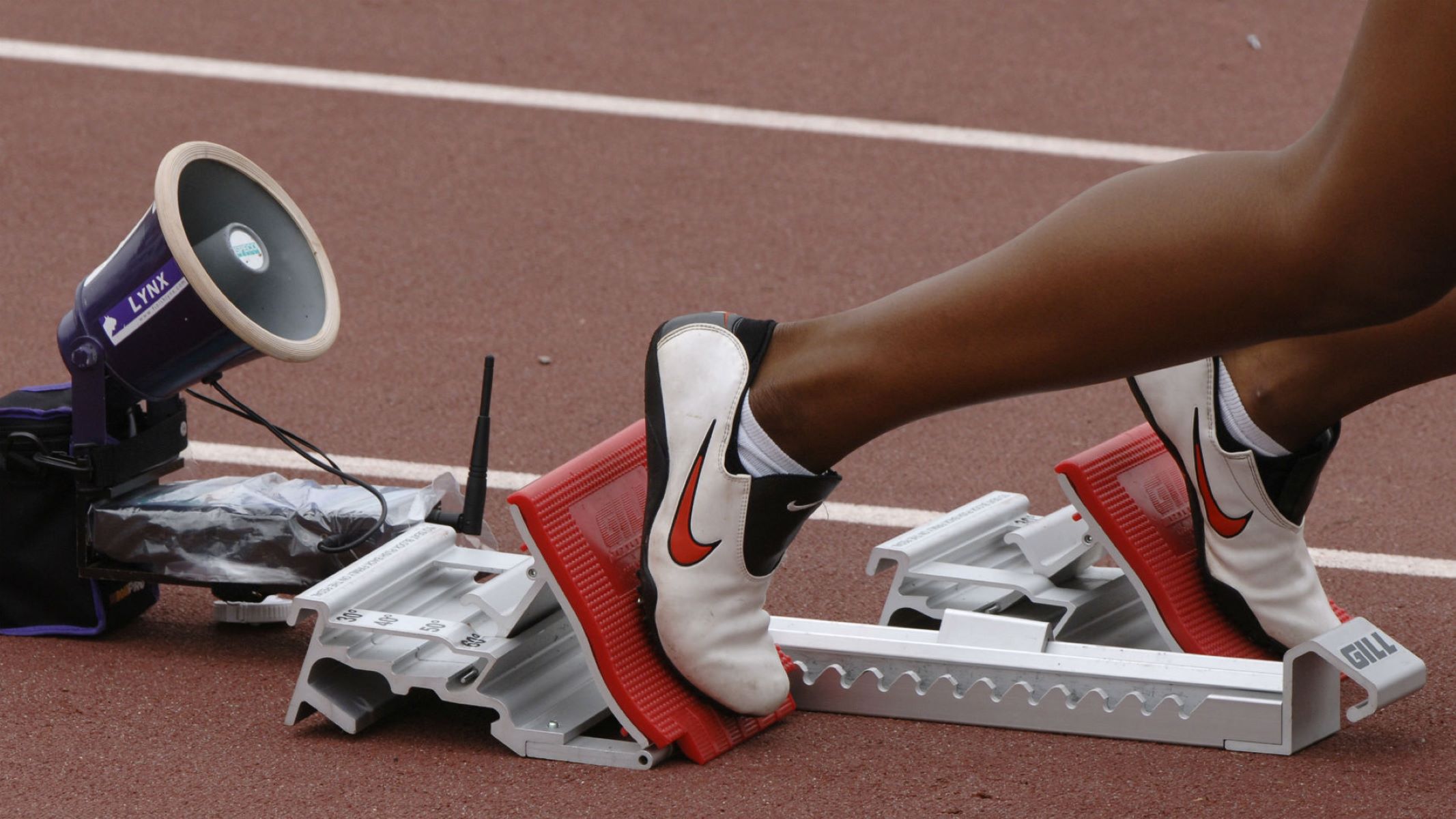

Featured
Why We Use Blocks In Track And Field
Published: September 6, 2023
Discover why blocks are an essential tool in track and field. Learn how to improve your performance and be featured among the best athletes in the sport.
Introduction
Track and field is a highly competitive sport that requires a combination of speed, agility, and technique. Among the different events in track and field, sprinting holds a special place due to its explosive nature and the thrill it brings to athletes and spectators alike. To maximize their performance, sprinters rely on various tools and techniques, with one essential component being the use of blocks.
Blocks, also known as starting blocks, are adjustable platforms that enable sprinters to launch themselves into a race with more power and efficiency. By providing a sturdy base and optimal positioning, blocks aid in accelerating the athlete’s initial burst and allow for a smoother transition from a stationary position to full running speed. Used by both professional and amateur athletes, blocks have become a standard part of sprinting events and are considered indispensable in today’s track and field competitions.
In this article, we will explore the significance of blocks in track and field, including their historical evolution, benefits, proper techniques for use, common mistakes to avoid, and safety measures to consider. Whether you are an aspiring sprinter, a track and field enthusiast, or simply curious about the world of athletics, understanding the importance of blocks will provide valuable insight into the sport and its intricacies.
Definition of Blocks in Track and Field
Blocks, in the context of track and field, refer to the starting devices used by sprinters to optimize their performance at the beginning of a race. These devices consist of two metal or plastic platforms, often equipped with footrests, and are positioned behind the starting line. Athletes place their feet on the footrests, crouch down, and use the blocks as a springboard for a more explosive start.
The primary purpose of blocks is to provide stability and leverage to sprinters, allowing them to generate more force and accelerate more efficiently. By angling the blocks in a way that positions the athlete’s feet slightly behind the starting line, the initial push-off force generated by the leg muscles is harnessed and directed forward, giving the sprinter a distinct advantage over their competition.
Blocks come in various designs to accommodate different athlete preferences and competition regulations. The platforms can be fixed or adjustable, with the latter offering athletes the flexibility to customize the angle and distance between the platforms to suit their individual needs. The footrests are padded to provide comfort and grip, ensuring that the sprinter’s feet remain securely in place during the explosive start.
It is important to note that the use of blocks is not limited to traditional track and field events like the 100-meter dash or the 200-meter sprint. They are also employed in shorter distance races, relay races, and even in some horizontal jumping events, where a strong and explosive start can make a significant difference in an athlete’s performance.
In the next sections, we will explore the historical evolution of blocks, the benefits they provide to sprinters, the techniques for using blocks effectively, common mistakes to avoid, and safety measures to ensure athletes can leverage the advantages of blocks while minimizing the risk of injury.
Historical Evolution of Blocks in Track and Field
The use of starting blocks in track and field has a fascinating history that spans several decades. Until the mid-20th century, sprinters had to rely on a simple digging motion to create footholds in the cinder track before the start of a race. These improvised footholds provided a small advantage, but they were far from perfect and often led to inconsistent starts.
In the early 1960s, a significant breakthrough occurred with the invention of the first modern starting blocks. Australian engineer and coach, Orion Alkin, developed a design that featured adjustable metal platforms with footrests to enhance athletes’ starting position. This marked a revolutionary advancement in sprinting technique and quickly gained popularity among athletes and coaches worldwide.
Over the years, further improvements and refinements were made to the design of starting blocks. Manufacturers began experimenting with different materials, such as lightweight plastics, to increase durability and portability. Adjustable mechanisms were introduced to allow athletes to fine-tune the angle and distance, providing a more personalized and optimized starting position.
The International Association of Athletics Federations (IAAF), the governing body for track and field, recognized the significant impact of starting blocks on sprinting performance and introduced regulations to standardize their usage. These regulations specified the dimensions and materials allowed for blocks, ensuring a fair and consistent playing field for all athletes.
Today, the evolution of starting blocks continues, with advancements in technology and materials driving innovation in their design. Blocks are now lighter, more ergonomic, and provide enhanced grip and stability. They are also designed to be easily adjusted and customized, accommodating the unique needs of individual athletes and ensuring they can achieve their maximum potential at the start of a race.
The incorporation of starting blocks in track and field not only revolutionized the way sprinters begin their races but also had a profound impact on the sport as a whole. Athletes are now able to achieve faster times, breaking records that were once considered unattainable. The use of starting blocks has become an integral part of sprinting preparation and training, enabling athletes to maximize their potential and push the boundaries of human performance.
Benefits of Using Blocks in Track and Field
The use of blocks in track and field provides numerous advantages for sprinters, making them an essential tool for maximizing performance. Here are some key benefits:
- Improved Start: Blocks enable sprinters to generate more power and explosiveness during the initial phase of a race. By pushing off from a stable and optimized position, athletes can accelerate faster and gain a crucial advantage over their competitors right from the start.
- Enhanced Efficiency: With blocks, athletes can align their body posture and push-off angles more effectively. This optimal positioning allows for a smoother and more efficient transition from a stationary position to full running speed, minimizing energy wastage and maximizing stride length.
- Increased Stability: Starting blocks provide a stable base for sprinters, allowing them to exert force with greater control and precision. This stability helps sprinters maintain balance and control during the explosive start, reducing the risk of slipping or stumbling and enabling a more controlled sprinting motion.
- Consistent Performance: By using blocks, sprinters can replicate their starting position race after race, ensuring a consistent approach to each race. This consistency allows athletes to fine-tune their technique and optimize their performance, as they can analyze and make adjustments based on a consistent starting point.
- Psychological Advantage: The presence of starting blocks on the track creates a psychological advantage for sprinters. It signals the commencement of a race, triggering a heightened sense of focus, motivation, and readiness. The psychological impact of using blocks can help athletes optimize their mental response, increasing their level of alertness and competitiveness.
In addition to these benefits, blocks also contribute to the overall excitement and spectacle of sprinting events. The explosive and dynamic start provided by blocks adds an element of drama and anticipation, captivating audiences and enhancing the overall experience for both spectators and athletes alike.
Overall, the use of blocks in track and field has revolutionized the sprinting world, enabling athletes to achieve faster times and push the boundaries of human performance. By providing a stable and optimized starting position, blocks offer significant advantages to sprinters, enhancing their starts, improving efficiency, increasing stability, ensuring consistency, and providing a psychological boost. These benefits have solidified the status of blocks as an indispensable tool in the pursuit of success in track and field sprinting events.
Proper Techniques for Using Blocks in Track and Field
Using blocks effectively requires proper technique and attention to detail. Here are some key steps to follow when using blocks in track and field:
- Positioning: Begin by positioning the blocks behind the starting line. The front block should be positioned approximately shoulder-width apart, with the rear block slightly further back. Ensure that the blocks are aligned with the athlete’s preferred starting foot position.
- Foot Placement: Place the balls of your feet on the footrests, ensuring that your toes are pointing forward. The footrests should be adjusted to a height that allows for a comfortable and secure position, providing optimal leverage for the push-off.
- Crouch Position: Lower your hips, bending at the knees and waist, to assume a crouched position. This position should be comfortable and balanced, with your weight evenly distributed between your hands and feet. Ensure that your head remains in line with your spine, maintaining a neutral position.
- Hand Placement: Position your hands on the track slightly wider than shoulder-width apart. Your fingers should be gripping the track’s surface to provide stability during the explosive start.
- Drive Phase: As the race begins, focus on driving your legs forward and pushing off forcefully from the blocks. Push through your feet and extend your legs, gradually moving your body into an upright position. Keep your shoulders relaxed and your arms pumping in a coordinated motion.
- Acceleration: Once you have cleared the blocks, shift your focus to building speed through powerful strides. Maintain a strong and controlled running form, with your chest up, eyes forward, and arms driving in a synchronized motion with your legs. Gradually increase your stride length and cadence as you accelerate.
- Transition: As you transition from the drive phase to full sprinting speed, focus on maintaining your momentum and rhythm. Remain relaxed and fluid in your movements, allowing your body to find its natural stride pattern.
It’s important to note that mastering the proper technique for using blocks requires practice and feedback. Work closely with a coach or experienced sprinter who can provide guidance and assist in fine-tuning your form and start mechanics. Regular video analysis can also be helpful in identifying areas for improvement and ensuring that you are executing the proper technique consistently.
By following these proper techniques for using blocks in track and field, you can maximize your explosive power and optimize your start position, setting yourself up for success in sprinting events.
Common Mistakes When Using Blocks in Track and Field
Using blocks effectively requires precision and attention to detail. However, there are some common mistakes that athletes make when using blocks in track and field. Being aware of these mistakes can help you avoid them and optimize your performance. Here are some common errors to watch out for:
- Poor Block Positioning: Placing the blocks too far or too close together can negatively impact your start. Ensure the blocks are aligned with your preferred foot positioning and positioned behind the starting line as specified in the rules.
- Incorrect Foot Placement: Having your feet in the wrong position on the footrests can hinder your push-off power. Make sure the balls of your feet are securely positioned on the footrests, with your toes pointing forward.
- Improper Crouch Position: Failing to maintain a proper crouch position can affect your explosiveness off the blocks. Keep your hips low, bending at the knees and waist, with your weight balanced and evenly distributed between your hands and feet.
- Poor Hand Placement: Incorrect hand placement can lead to an unstable start. Position your hands slightly wider than shoulder-width apart, gripping the track’s surface to provide stability during the push-off.
- Inefficient Drive Phase: Not utilizing proper driving mechanics during the push-off can limit your initial acceleration. Focus on driving your legs forward forcefully and extending them to generate power.
- Lack of Body Control: Failing to maintain proper body control can impede your transition into full sprinting speed. Keep your shoulders relaxed, maintaining a neutral head position, and ensure smooth and coordinated arm movements.
- Overthinking: Getting too caught up in the technical aspects of block usage can be detrimental to your performance. Practice and repetition are essential for mastering blocks, but avoid overthinking during races. Trust in your training and execute your start mechanics instinctively.
- Insufficient Practice: Failing to practice starts regularly can lead to a lack of proficiency with blocks. Incorporate block starts into your training routine, practicing proper technique and getting comfortable with the explosive start.
To avoid these common mistakes, work closely with a coach or experienced sprinters who can provide feedback and guidance. Regular practice and video analysis can help identify areas for improvement and ensure that you are using blocks correctly and consistently.
By being mindful of these common mistakes, you can optimize your start and harness the full potential of starting blocks in track and field.
Safety Measures When Using Blocks in Track and Field
While blocks are designed to enhance performance, it is crucial to prioritize safety when using them in track and field. Here are some important safety measures to consider when using blocks:
- Proper Equipment: Ensure that the blocks you are using are in good condition and meet the necessary safety standards. Check for any signs of damage or wear and tear, such as loose screws or cracked platforms, and replace components as needed.
- Secure Foot Placement: Before starting, double-check that your feet are securely placed on the footrests. This will help prevent slipping or losing balance during the explosive start.
- Warm-up and Stretching: Prior to using blocks, perform a thorough warm-up routine to prepare your muscles and joints. Incorporate dynamic stretching exercises that target the lower body, focusing on the calves, hamstrings, and hip flexors.
- Avoid Overstraining: While it is important to push yourself during a race, be mindful of not overstraining your muscles during the initial push-off. Gradually increase the force and intensity to minimize the risk of muscle strains or injuries.
- Proper Surfaces: Ensure that you are using blocks on a safe and appropriate track surface. Avoid using starting blocks on wet or slippery tracks to reduce the risk of falls or accidents.
- Regular Maintenance: Maintain and clean your blocks regularly to prevent any debris or buildup that could affect their stability or functionality. Lubricate moving parts and check for any loose screws or bolts that need tightening.
- Coach Supervision: If you are new to using blocks or unfamiliar with proper technique, it is recommended to have a trained coach or experienced sprinter monitor your starts and provide guidance. They can help you develop proper mechanics, minimize injury risk, and optimize your performance.
- Listen to Your Body: Pay attention to your body’s signals during and after using blocks. If you experience any pain or discomfort, stop immediately and seek medical attention if necessary. Ignoring pain or pushing through injuries can lead to further complications.
Remember, safety should always be the top priority when using blocks in track and field. By implementing these safety measures and exercising caution, you can minimize the risk of injuries and enjoy the benefits of using blocks to enhance your sprinting performance safely.
Conclusion
In the realm of track and field, the use of blocks has become an integral part of sprinting events. These starting devices have revolutionized the way sprinters begin their races, providing a solid base, optimal positioning, and enhanced power for an explosive start. By driving off the blocks with precision and utilizing proper technique, sprinters can maximize their performance on the track.
Throughout history, blocks have evolved from simple footholds to sophisticated and adjustable platforms. The advancements in their design, materials, and regulations have contributed to faster times and greater competitiveness in sprinting events. Today, blocks are a standard tool used by both professional and amateur athletes, providing benefits such as improved start, enhanced efficiency, increased stability, consistency, and psychological advantages.
Using blocks correctly requires proper positioning, foot placement, crouch position, hand placement, and execution of the drive phase. Avoiding common mistakes, such as poor block positioning or inefficient body control, is vital for optimal performance. Safety should always be a priority when using blocks, and athletes must ensure the equipment is in good condition, secure their foot placement, warm up properly, and use blocks on suitable track surfaces.
In conclusion, the inclusion of blocks in track and field has significantly contributed to the advancement of sprinting as a sport. By harnessing the benefits they offer and adhering to proper techniques and safety measures, athletes have the opportunity to unlock their full potential and achieve remarkable results. Whether you are an aspiring sprinter or a fan of track and field, understanding the significance of blocks adds depth to your appreciation of the skill, precision, and dedication required to excel in sprinting events.
